#jodo shu
Text
The Three Pure Land Sutras
While writing a recent blog post, I realized that I had mentioned, but never explained, what the Three Pure Land Sutras are in the Buddhist tradition, and their significance to Mahayana Buddhism as a whole.
Think of this as a handy reference post. I haven’t done one of these in a while. 😊
The Buddhist Canon
When you think of most world religions, they are usually based on one or two books.…

View On WordPress
12 notes
·
View notes
Text
Sayonara -23’, this n that…
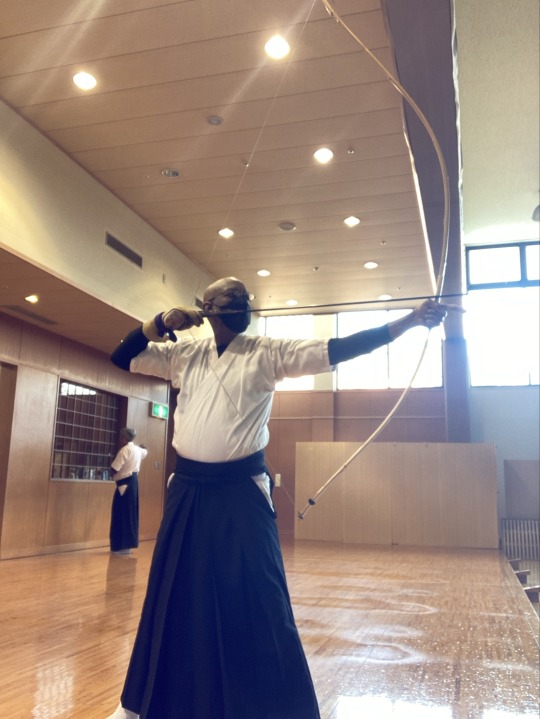
View On WordPress
#Archery#Blues#Blues band#Buddhism#Buddhist#Buddhist Temple#Chan#Chan Buddhism#Classical Shakuhachi#Funk#funky music japan#Jam session#Jamm session#Japan#Jazz#jodo shu#Jodo-shu Buddhism#Jodo-shu Buddism#Kansai#Komuso#Kung Fu#Kyudo#Live House#Live music#Live session#Martial Art#meditation#Motorbiking#Music#Nihon
3 notes
·
View notes
Text
youtube
Watch the American Climate Leadership Awards 2024 now: https://youtu.be/bWiW4Rp8vF0?feature=shared
The American Climate Leadership Awards 2024 broadcast recording is now available on ecoAmerica's YouTube channel for viewers to be inspired by active climate leaders. Watch to find out which finalist received the $50,000 grand prize! Hosted by Vanessa Hauc and featuring Bill McKibben and Katharine Hayhoe!
#ACLA24#ACLA24Leaders#youtube#youtube video#climate leaders#climate solutions#climate action#climate and environment#climate#climate change#climate and health#climate blog#climate justice#climate news#weather and climate#environmental news#environment#environmental awareness#environment and health#environmental#environmental issues#environmental justice#environment protection#environmental health#Youtube
17K notes
·
View notes
Text
The Kamakura period is such a funny time in the history not only of Buddhism but of religion in general, if you think about it. When else do you get such whacky dudes such as "guy who preaches that all practices other than reciting a guy's name even just once are ineffective at breaking free from the cycle of reincarnation and is shocked, SHOCKED I tell you that people interpret that as permission to abandon all moral discipline" and "guy who thinks the reason so many natural disasters are happening is because people are reading the wrong books from his religion and to remedy that he teaches everyone to repeatedly chant the title of his favorite book in hopes that somehow this will impart the book's wisdom"?
#I know Nichiren and Jodo-Shu/Shinshu have more depth than that#but come on#at face value this just sounds a bit ridiculous#ah Japan
3 notes
·
View notes
Text
Western variations for Japanese Buddhist traditions....
With Ōhigan came and gone I would like to share an idea for Westerners who practice Japanese Buddhism.
Ōhigan is celebrated by all Japanese Buddhist Schools and is a time to honor and remember our ancestors as well as remember the 6 perfections.
Traditionally bōtamochi and ohagi are made in the spring and autumn of ōhigan. These are mochi sweets made the same way both times of the year just named after different flowers bōtamochi after the bōtan or peony and ohagi after the higanabana.
In the West or at least the Midwest where I live. It is difficult to find the proper rice flour to make mochi. So I began to think I remember my grandmother making tea cakes. Semi-sweet cookies that we would have with iced tea during the summer and hot tea in the winter. A spin on mochi during ōhigan is making tea cakes with a small well in the center filled with a seasonal jam. Strawberry for spring and spiced apples or pumpkin for the autumn. Offer it to the ancestors and Buddha and then partake in the cookies yourself!
Just wanted to share my idea for any other Western Buddha its out there!
6 notes
·
View notes
Text
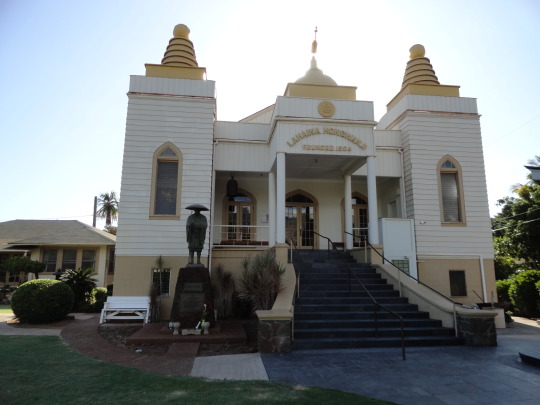
A terrible day for Hawaii and the Buddhist community. The wild fire killed dozens of people and destroyed Lahaina, including the historic and beloved Lahaina Hongwanji Mission (Jodo Shinshu, founded in 1904), Lahaina Jodo Mission (Jodo Shu, founded in 1912), and Lahaina Hokoji Shingon Mission (Shingon Shu, founded in 1902). These three temples have been central places of community, refuge, culture, and support for generations of Japanese Americans and others. The Shingon temple was the first outside of Asia. The Jodo one featured a three-story pagoda (rare outside of Asia) and replica of the famous Amida Daibutsu of Kamakura. The Jodo Shinshu temple sangha is especially large and active for the area, with over 70 member families. Information about how to support the Lahaina Buddhist community in the midst of this tragedy will be forthcoming.

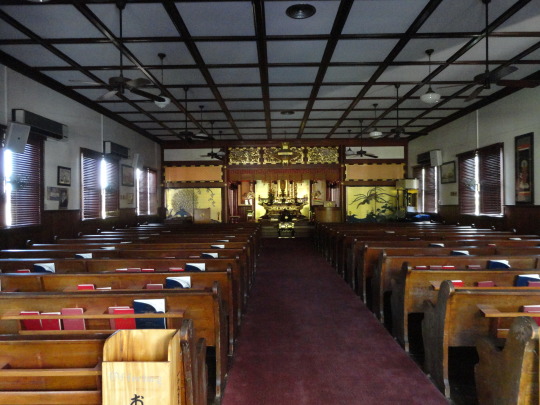
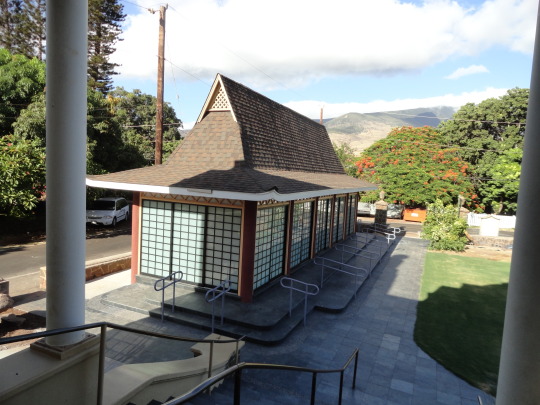

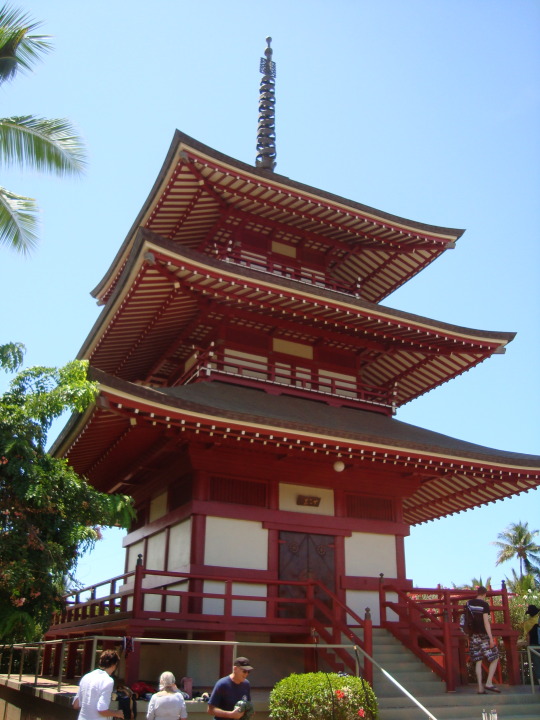



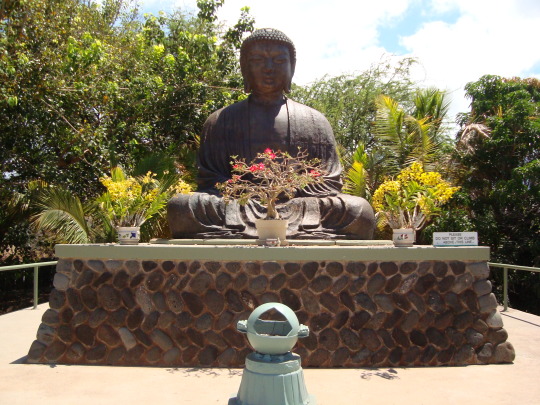
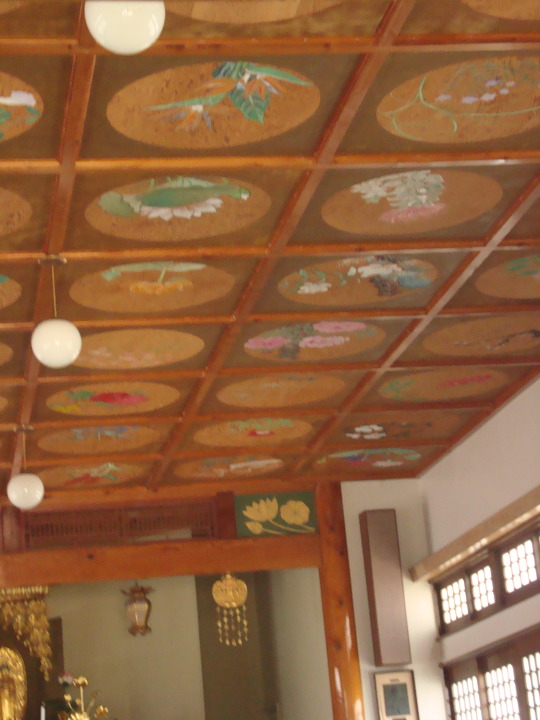

78 notes
·
View notes
Text
Masterpost
This is a placeholder and will gradually grow as I repost more of my videos from twitter. I say gradual because I'm not going to spam your dashes with 100 videos a day.

Music
Uni-era XZ covering Coco Lee
XZ and Peng Chuyue covering Wild Child (studio version)
Xiao Zhan, Peng Chuyue and Zhao Lei sing Never Say Goodbye at X-Nine's final concert
Wu Jiacheng's video for Dancing Shoes (his song about X-Nine)
X-Nine cover Wild Bloom (2016)
X-Nine rehearsing Face Face before their 520 show (2018)
Xiao Zhan and Zhao Lei sing Somewhere Over the Rainbow (X-Nine Channel)
Xiao Zhan singing Teresa Teng's 我只在乎你/I Only Care About You/时の流れに身をまかせ acapella during a stream
X-Nine covering Turbulent Era Superstar
Text
Forum and Weibo posts about Uni-era XZ
Excerpts from Esquire April 2023
Compilations
Xiao-meiren explainer
Xiao Zhan and food sharing
Xiao Zhan demanding praise from his X-Nine friends
Xiao Zhan's Youth Channel intros
Xiao Zhan, Peng Chuyue and Gu Jiacheng on selfies
Xiao Zhan, Xuan Lu and Gokuraku Jodo
Xiao Zhan and Peng Chuyue talk about their CP and ship names
What was your first impression of Xiao Zhan?
Xiao Zhan and Shu Qi
X-Nine superlatives, Xiao Zhan edition
X-Nine on vanity (in which XZ almost admits to it and everyone tries to be humble)
Xiao Zhan speaking about the didis going to uni
The rest of the X-Nine boys on the Xiao Zhan they know
Xiao Zhan/X-Nine crumbs from 2019 featuring Peng Chuyue, Guo Zifan and Xia Zhiguang
Curtain calls from every stop of A Dream Like A Dream
Interviews and livestreams
Early X-Fire livestream with Xiao Zhan and friends
Xiao Zhan joins team Peng Chuyue and Bai Shu
Bai Shu tells a story; Xiao Zhan climbs on him by way of punishment
Post-X-Fire finale red team interview
Xiao Zhan and Peng Chuyue interview about the group
Xiao Zhan interviews Xia Zhiguang about their relationship
Xiao Zhan interview about X-Nine and the Wolf
Xiao Zhan livestream interview with X-Nine on his look
Xiao Zhan livestreams with Xia Zhiguang and fights antis
Xiao Zhan and Gu Jiacheng livestream in Chongqing for Superstar Academy
X-Nine debut anniversary event: Xiao Zhan gives acting advice which segues into flirting
X-Nine debut anniversary event: Xiao Zhan sings to a fan
X-Nine debut anniversary event: Xiao Zhan the game king (in which he admits that he's handsome)
Xiao Zhan discusses pretty privilege and his own looks (2018)
X-Fire era Games
X-Fire pocky game
X-Fire paper pass game
X-Fire's white team attempts to make Xiao Zhan laugh
Xiao Zhan vs Gu Jiacheng (physical challenge edition)
Xiao Zhan vs white team (trickery edition)
Zhao Lei tries to make Xiao Zhan laugh; Xiao Zhan tries to make Wu Jiacheng laugh
King's game (includes the infamous Xiao Zhan/Peng Chuyue ear kiss)
Spare change
Acting challenge
Blindfold game with Gu Jiacheng
The body parts game
Balloon shuffle
Water carrying
Dress the female guest competition with Bai Shu
Variety
Blindfold game - hands edition (X-Nine Channel)
Bedsheet game with Peng Chuyue (X-Nine Channel)
Princess carry with Guo Zifan (X-Nine Channel)
Putting on pants hands-free (X-Nine Channel)
Xiao Zhan demonstrates hands-free typing (X-Nine Channel)
Xiao Zhan fits himself into a suitcase with Xia Zhiguang's help (X-Nine Channel)
X-Nine in cosplay answering questions in character (X-Nine Channel)
Who can put on clothes faster with Gu Jiacheng (X-Nine Channel)
Double Sided Exploration interview clips with Xia Zhiguang and Yan Xujia (and cats)
BTS segment for X-Nine Channel with Xiao Zhan and Peng Chuyue pretending to fight about the assistant host spot
Cooking livestream - part 1 | part 2
Pajama party - Xiao Zhan's outfit
Pajama party - Xiao Zhan paints, Peng Chuyue helps
Pajama Party - Xiao Zhan helps Peng Chuyue sew
Pajama Party - Xiao Zhan is unimpressed about his punishment
Kugou Big Show Party - Xiao Zhan wins a game with...math
Kugou Big Show Party - Xiao Zhan and Peng Chuyue do spooky and sweet morning calls
Kugou Big Show Party - Reverse Never Have I Ever with XZ
Other
Team Xiao-Bai-Yue as Team Rocket
X-Fire's red team move in together
Peng Chuyue attempts to record a vlog, Xiao Zhan and Xia Zhiguang help
Bai Shu, Xiao Zhan and Xia Zhiguang give Peng Chuyue shit
Xiao Zhan moves from white to red team on X-Fire
Behind the scenes from Superstar Academy with Bai Shu (and Xiao Zhan's fake anger)
Xiao Zhan and X-Nine didis at the 520 show in 2018
Xiao Zhan says go the fuck to bed
Xiao Zhan's speech at X-Nine's Hangzhou concert and their birthday surprise for him
BTS
Behind the scenes of Oh! My Emperor with some animal co-stars and X-Nine buddies
Animals
Xiao Zhan works at a cat cafe for a day (Double Sided Exploration)
Xiao Zhan, Peng Chuyue and Ai-Yo the cat
Xiao Zhan brushes a cat while telling a hater off
Xiao Zhan vs Ai-Yo the cat
Xiao Zhan likes cats and cats like Xiao Zhan: the compilation
27 notes
·
View notes
Text
youtube
Watch the 2024 American Climate Leadership Awards for High School Students now: https://youtu.be/5C-bb9PoRLc
The recording is now available on ecoAmerica's YouTube channel for viewers to be inspired by student climate leaders! Join Aishah-Nyeta Brown & Jerome Foster II and be inspired by student climate leaders as we recognize the High School Student finalists. Watch now to find out which student received the $25,000 grand prize and top recognition!
#ACLA24#ACLA24HighSchoolStudents#youtube#youtube video#climate leaders#climate solutions#climate action#climate and environment#climate#climate change#climate and health#climate blog#climate justice#climate news#weather and climate#environmental news#environment#environmental awareness#environment and health#environmental#environmental issues#environmental education#environmental justice#environmental protection#environmental health#high school students#high school#youth#youth of america#school
17K notes
·
View notes
Text
Gongyo
COMPLETE GONGYO (LITURGY OF THE SOKA GAKKAI DENOMINATION WITHIN NICHIREN BUDDHISM)
Nam-myoho-renge-kyo
Nam-myoho-renge-kyo
Nam-myoho-renge-kyo
Myo ho ren ge kyo.
Hoben-pon. Dai ni.
Niji seson. Ju sanmai.
Anjo ni ki.Go shari-hotsu.
Sho-but chi-e. Jinjin muryo.
Go chi-e mon. Nange nannyu.
Issai shomon.Hyaku-shi-butsu.
Sho fu no chi. Sho-i sha ga.
Butsu zo shingon. Hyaku sen man noku.
Mushu sho butsu. Jin gyo sho-butsu.
Muryo doho. Yumyo shojin.
Myosho fu mon. Joju jinjin.
Mi-zo-u ho. Zui gi sho setsu.
Ishu nange. Shari-hotsu.
Go ju jo-butsu irai. Shuju innen.
Shuju hiyu. Ko en gonkyo.
Mu shu hoben. Indo shujo.
Ryo ri sho jaku. Sho-i sha ga.
Nyorai hoben. Chi-ken hara-mitsu.
Kai i gu-soku. Shari-hotsu.
Nyorai chi-ken. Kodai jinnon.
Muryo muge. Riki. Mu-sho-i. Zenjo.
Gedas. Sanmai. Jin nyu musai.
Joju issai. Mi-zo-u ho.
Shari-hotsu. Nyorai no.
Shuju fun-betsu. Gyo ses sho ho.
Gon-ji nyunan. Ekka shushin.
Shari-hotsu. Shu yo gon shi.
Muryo muhen. Mi-zo-u ho.
Bus shitsu joju. Shi shari-hotsu.
Fu shu bu setsu. Sho-i sha ga.
Bus sho joju. Dai ichi ke-u.
Nange shi ho. Yui butsu yo butsu.
Nai no kujin. Shoho jisso.
3x: Sho-i shoho. Nyo ze so.
Nyo ze sho. Nyo ze tai.
Nyo ze riki. Nyo ze sa.
Nyo ze in. Nyo ze en.
Nyo ze ka. Nyo ze ho.
Nyo ze honmak kukyo to.
Sho-i shoho. Nyo ze so.
Nyo ze sho. Nyo ze tai.
Nyo ze riki. Nyo ze sa.
Nyo ze in. Nyo ze en.
Nyo ze ka. Nyo ze ho.
Nyo ze honmak kukyo to.
Sho-i shoho. Nyo ze so.
Nyo ze sho. Nyo ze tai.
Nyo ze riki. Nyo ze sa.
Nyo ze in. Nyo ze en.
Nyo ze ka. Nyo ze ho.
Nyo ze honmak kukyo to.
Myo ho ren ge kyo.
Nyorai ju-ryo-hon. Dai ju-roku.
Ji ga toku bu rai. Sho kyo sho kosshu.
Muryo hyaku sen man. Oku sai asogi.
Jo seppo kyoke. Mushu oku shujo.
Ryo nyu o butsu-do. Nirai muryo ko.
I do shujo ko. Hoben gen nehan.
Ni jitsu fu metsu-do. Jo ju shi seppo.
Ga jo ju o shi. I sho jin-zu-riki.
Ryo tendo shujo. Sui gon ni fu ken.
Shu ken ga metsu-do. Ko kuyo shari.
Gen kai e renbo., Ni sho katsu-go shin.
Shujo ki shin-buku. Shichi-jiki i nyunan.
Isshin yok ken butsu. Fu ji shaku shinmyo.
Ji go gyo shuso. Ku shutsu ryojusen.
Ga ji go shujo. Jo zai shi fu-metsu.
I ho-ben-rik ko. Gen u metsu fu-metsu.
Yo-koku u shujo. Kugyo shingyo sha.
Ga bu o hi chu. I setsu mujo ho.
Nyoto fu mon shi. Tan ni ga metsu-do.
Ga ken sho shujo. Motsu-zai o kukai.
Ko fu I gen shin. Ryo go sho katsu-go.
In go shin renbo. Nai shutsu I seppo.
Jin-zu-riki nyo ze. O asogi ko.
Jo zai ryojusen. Gyu yo sho jusho.
Shujo ken ko jin. Dai ka sho sho ji.
Ga shi do annon. Tennin jo juman.
Onrin sho do-kaku. Shuju ho shogon.
Hoju ta keka. Shujo sho yu-raku.
Shoten gyaku tenku. Jo sas shu gi-gaku.
U mandara ke. San butsu gyu daishu.
Ga jodo fu ki. Ni shu ken sho jin.
Ufu sho kuno. Nyo ze shitsu juman.
Ze sho zai shujo. I aku-go innen.
Ka asogi ko. Fu mon sanbo myo.
Sho u shu ku-doku. Nyuwa shichi-jiki sha.
Sokkai ken gashin. Zai shi ni seppo.
Waku-ji i shi shu. Setsu butsu-ju muryo.
Ku nai ken bussha. I setsu butsu nan chi.
Ga chi-riki nyo ze. Eko sho muryo.
Jumyo mushu ko. Ku shugo sho toku.
Nyoto u chi sha. Mot to shi sho gi.
To dan ryo yo jin. Butsu-go jip puko.
Nyo i zen hoben. I ji o shi ko.
Jitsu zai ni gon shi. Mu no sek komo.
Ga yaku I se bu. Ku sho kugen sha.
I bonbu tendo. Jitsu zai ni gon metsu.
I joken ga ko. Ni sho kyoshi shin.
Ho-itsu jaku go-yoku. Da o aku-do chu.
Ga jo chi shujo. Gyo do fu gyo do.
Zui o sho ka do. I ses shuju ho.
Mai ji sa ze nen. I ga ryo shujo.
Toku nyu mu-jo do. Soku joju busshin.
Nam-myoho-renge-kyo
Nam-myoho-renge-kyo
Nam-myoho-renge-kyo
3 notes
·
View notes
Text
Three monk Chat
A while back at a visit to my temple in Amagasaki, Komyo-ji. After a ceremony the head monk, his disciple and I had our usual social gathering. Food, drinks, chatting about life, Buddhism, Zen, Shakuhachi. Komyo-ji is an official Myoanji Shakuhachi Dojo, besides being a Jodo-shu temple. It is also where I hold Zen sessions, which is unusual for. Jodo-shu temple.
On this day I decided I would do…

View On WordPress
#Blasain#Blasian#Buddhism#Buddhist#Ch&039;an#Chan Priest#flute#Honkyoku#Japan#Japan Temple#Japanese culture#Japanese music#Japanese Temple#Kansai#Komuso#Kyoto#Meditation#Myoanji#Osaka#Shakuhachi#Sui Zen#SuiZen#Takuhatsu#Traditional Japan#Zen#Zen Priest
0 notes
Text
Taming the Monkey Mind - A Guide to Pure Land Practice


Taming the Monkey Mind - A Guide to Pure Land Practice
Taming the Monkey Mind - A Guide to Pure Land Practice. Pure Land Buddhism is branch of Mahayana Buddhism. In Pure Land practice people focus on buddha in the form of Amitabha, the buddha of infinite life and infinite light. Believers put their faith in Amitabha Buddha and recite his name, confident in the promises he has given to deliver all who invoke his name. Download the free ebook here: (145 pages) :

Taming the Monkey Mind
What is Pure Land Buddhism?
Pure Land Buddhism is a branch of Mahayana Buddhism that emphasizes devotion to the Buddha Amitabha (also known as Amitayus or Amida Buddha) as the primary means of salvation. The ultimate goal for Pure Land Buddhists is rebirth in the "Pure Land" or "Western Paradise" — a celestial realm where one can practice the Dharma without the distractions and difficulties present in our current world, thus ensuring progress toward enlightenment. Key features of Pure Land Buddhism include:
1. Nianfo/Nembutsu: The core practice of Pure Land Buddhism is the recitation of the name of Amitabha Buddha. In Chinese, it's called "nianfo" and in Japanese, it's "nembutsu." The most common form of this recitation is the phrase "Namo Amituofo" in Chinese or "Nam(u) Amida Butsu" in Japanese.
2. Faith and Devotion: Pure Land places a significant emphasis on sincere faith in Amitabha Buddha and his vow to save all sentient beings. By reciting his name with genuine faith, believers hope to be reborn in the Pure Land.
3. Amitabha's Vows: Central to Pure Land teachings are the 48 vows made by Amitabha Buddha, particularly the 18th vow, in which he promises to ensure the rebirth in his pure land of anyone who sincerely recites his name.
4. Pure Land: This is a paradisiacal realm described in various sutras where practitioners are free from rebirth in the six realms of samsara and can pursue enlightenment without the obstacles found in our current world.
5. Scriptures: Pure Land Buddhism relies on several sutras, but the most important are the Longer Sukhavativyuha Sutra, the Shorter Sukhavativyuha Sutra, and the Amitayurdhyana Sutra. These texts describe Amitabha Buddha, his vows, and the nature of the Pure Land.
6. Accessibility: One of the appeals of Pure Land Buddhism is its accessibility. The primary practice of chanting Amitabha's name is simple and can be done by anyone, regardless of their level of education, social status, or previous deeds.
Historically, Pure Land traditions became especially popular in East Asia, including countries like China, Japan, Korea, and Vietnam. In Japan, the Jodo Shinshu (True Pure Land School) and Jodo Shu (Pure Land School) are major representatives of this tradition. While the practices and teachings might differ slightly between regions and specific sects, the emphasis on faith in Amitabha and the aspiration to be reborn in the Pure Land remain central to all.
Read the full article
0 notes
Photo
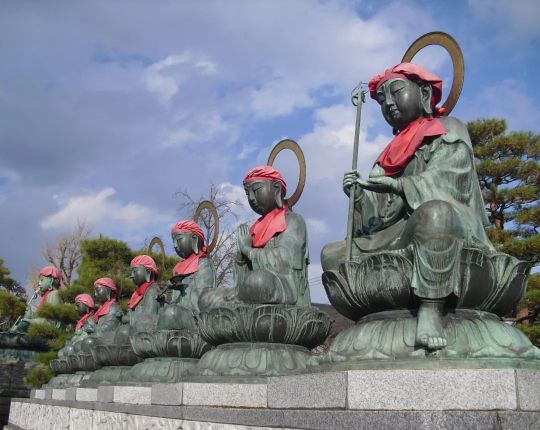
Zenkō-ji (善光寺) est un temple bouddhiste, situé dans la ville japonaise de Nagano. Construit au VIIe siècle, il fait partie des trésors nationaux du Japon. La ville de Nagano, établie en 1897, fut initialement construite autour du temple. Historiquement, Zenkō-ji est peut-être plus célèbre pour son implication dans les combats entre Uesugi Kenshin et Takeda Shingen au XVIe siècle, quand il a constitué une des bases des opérations de Kenshin. Actuellement, Zenkō-ji est un des derniers sites de pèlerinage au Japon. Zenkō-ji a été fondé avant que le bouddhisme ne soit fractionné au Japon en différentes écoles. Aussi, il appartient actuellement aux deux écoles de bouddhisme japonais, Tendai et Jodo Shu, et est cogéré par 25 prêtres de l’ancienne école, et 14 de la plus récente. Dans le temple sont enchâssées des images du Bouddha Amitabha. Selon la légende, l’image, à l’origine de la dispute entre deux clans, a été immergée dans un canal. Elle a été repêchée plus tard par Yoshimitsu Honda. Le temple serait nommé selon la translittération chinoise du nom de Yoshimitsu. #zenkoji #nagano #japan #travel #長野 #tokyo #善光寺 #長野県 #travelphotography #temple #travelgram #信州 #photography #matsumoto #instagood #photo #日本 #zenkojitemple #nature #kyoto #松本 #trip #beautiful #snow #photooftheday #traveling #instatravel #nightview #長野市 #japantrip https://dragonstudio.fr/2019/05/31/zenko-ji-%e5%96%84%e5%85%89%e5%af%ba-nagano-japon/ (à Zenkō-Ji, a Buddhist Temple in Nagano, Japan.) https://www.instagram.com/p/CmL_8z4ItZb/?igshid=NGJjMDIxMWI=
#zenkoji#nagano#japan#travel#長野#tokyo#善光寺#長野県#travelphotography#temple#travelgram#信州#photography#matsumoto#instagood#photo#日本#zenkojitemple#nature#kyoto#松本#trip#beautiful#snow#photooftheday#traveling#instatravel#nightview#長野市#japantrip
0 notes
Link
#Achtsamkeit#Besonnenheit#DerWegdesBogens#Diogenes#Kyudo#Lebenshilfe#Meditation#PauloCoelho#Schreibblogg#Zen-Buddhismus
1 note
·
View note
Text
Who Is Amida Buddha: the Buddha of Infinite Light?
Hello Readers,
Recently I talked about the Pure Land Buddhist tradition, and in particular the Three Pure Land Sutras that are central to the tradition.
But then I realized that I’ve never really explained who Amida (Amitabha) Buddha is. Now that the English language site for Jodo Shu has been retired, I wanted to fill in some gaps in information, and explain Amida Buddha’s significance to the…

View On WordPress
5 notes
·
View notes
Text
Classical Shakuhachi Society Nov. meeting.
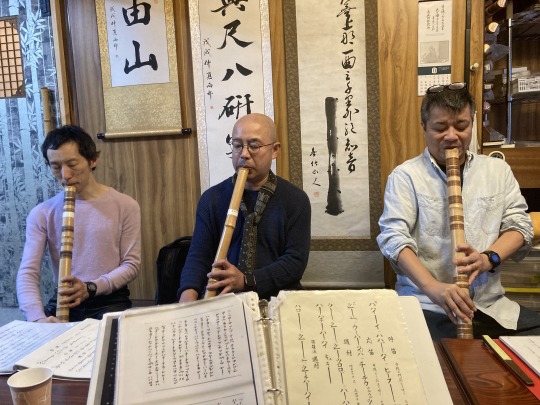
View On WordPress
#Blues band#Buddhism#Buddhist#Chan#Chan Buddhism#Classical Shakuhachi#Jam session#Jamm session#Japan#Jazz#jodo shu#Jodo-shu Buddhism#Jodo-shu Buddism#Kansai#Komuso#Live music#meditation#Music#Nihon#Nippon#Osaka#Shakuhachi#Sui-Zen#Traditional Music#travel Japan#Zen#Zen Mind
2 notes
·
View notes
Photo

Komyo-ji - Le temple des lotus anciens à Kamakura
Komyo-ji est un temple bouddhiste de la secte Jodo-shu situé près des plages, à l’extrémité sud-est de la ville de Kamakura dans la préfecture de Kanagawa. Moins connu des touristes, le site gagne à être découvert pour son histoire prégnante et l'architecture imposante de ses pavillons.
Lire la suite sur Kanpai.fr
https://www.kanpai.fr/kamakura/komyo-ji
0 notes
Video
Chion-in Temple Kyoto 1930s por Blue Ruin 1
Por Flickr:
Two Maiko girls and a Geisha standing underneath the Great Bell at the Chion-in Temple in Kyoto.
#Maiko#Geiko#Geisha#Kimono#Darari Obi#Chion-in Temple#Chionin#Jodo Shu#Pure Land Sect#Buddhism#Buddhist bells#Ghanta#Ogane#Great Bell#Large Bell#Daishoro#Great Bell Tower#Kyoto#Higashiyama-ku#Japanese#Japan#Showa period#Postcard#Okobo#Geta#Furisode#Darari-no-Obi#Dangling sashes
9 notes
·
View notes